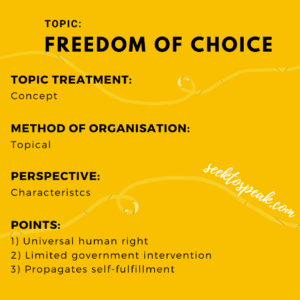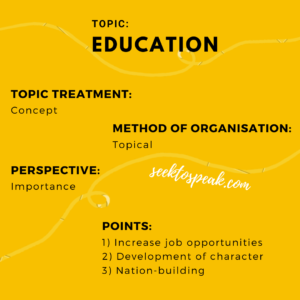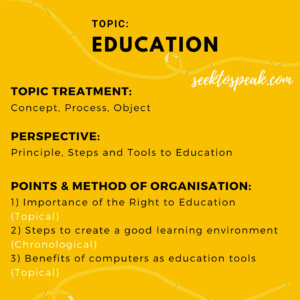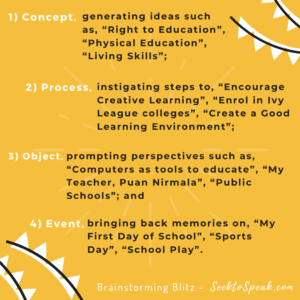Humans, by nature, are prone to generalising, categorising and compartmentalising. That is why most things that regulate what we see and how we experience them are socially constructed, such as government, race, and money. We create these concepts because such categorisation makes it easier for us to make sense of the world.
The Habit of Categorising
It is no surprise then that many speakers tend to categorise a topic and structure their information based on the categorisation they build. The way in which we develop a speech is largely dependent on the way we choose to treat and perceive a topic. For example, “The Right to Life” is recognised as a human right concept, “Photosynthesis”, the process of energy conversion for plants, “Books”, objects of knowledge and “Deepavali”, an event known as the Festival of Lights.
Types of Topic Treatment
This is especially true for informative speeches as it is easier to structure information when a speaker categorises a topic. For informative speeches, topics are generally categorised into the following broad groupings:

Once a topic is categorised, speakers then proceed to explain the topic in the best way possible for that category. For example, a Concept is best explained through a Topical arrangement of information. This is where information is grouped based on the relationship or connection between the topic and points. On the other hand, a Process or Event can be easily understood through arranging such information in a Chronological pattern, where a step-by-step guide is given. In contrast, an Object is typically described in a Spatial fashion, by highlighting its physical characteristics, creating a picture in the mind of the audience.
Applying the above categorisation and method of organisation, the following would be my speech outline for the topic, “Freedom of Choice”:

However, I find that such habits, while helpful in determining how best to structure information, become very limiting. It discourages speakers from being creative with their content and limits their brainstorming process. Often times, speakers end up speaking in templates and regurgitating whatever they read online.
Diversify and Multiply Perspectives
To solve this, I have asked my students to treat topics differently, preventing them from pigeonholing a topic, and instead, encouraging them to see the topic as what it could be. This can be done by viewing the topic as a Concept, Process, Event AND Object at the same time. This will instantaneously broaden the perspective of the topic and generate a variety of ideas.
For example, a typical treatment for the topic, “Education”, would see speakers treating it as a concept and likely structuring the speech in a topical manner. As such, a speaker’s speech on this topic would likely look like this:

Brainstorming Blitz
In contrast, imagine forcing yourself to see the topic, “Education” as a concept, process, event AND object. I call this the Brainstorming Blitz, making your brain view the topic from a variety of perspectives, blitzing and storming your way through various categories and ideas. This will lead you to think of “Education” as a;
Instead of trying to find points for a single perspective on a topic, a speaker gets a whole host of other ideas and perspectives generated from treating the topic as different things. This then allows them to be selective with their ideas, ensuring that all points flow well, rather than struggle to find points for one perspective. The speaker could also potentially be able to arrange information in a Topical, Chronological AND Spatial manner.
After a further selection process on the above exercise and on the same topic of “Education”, the speaker’s speech would instead be as follows:

